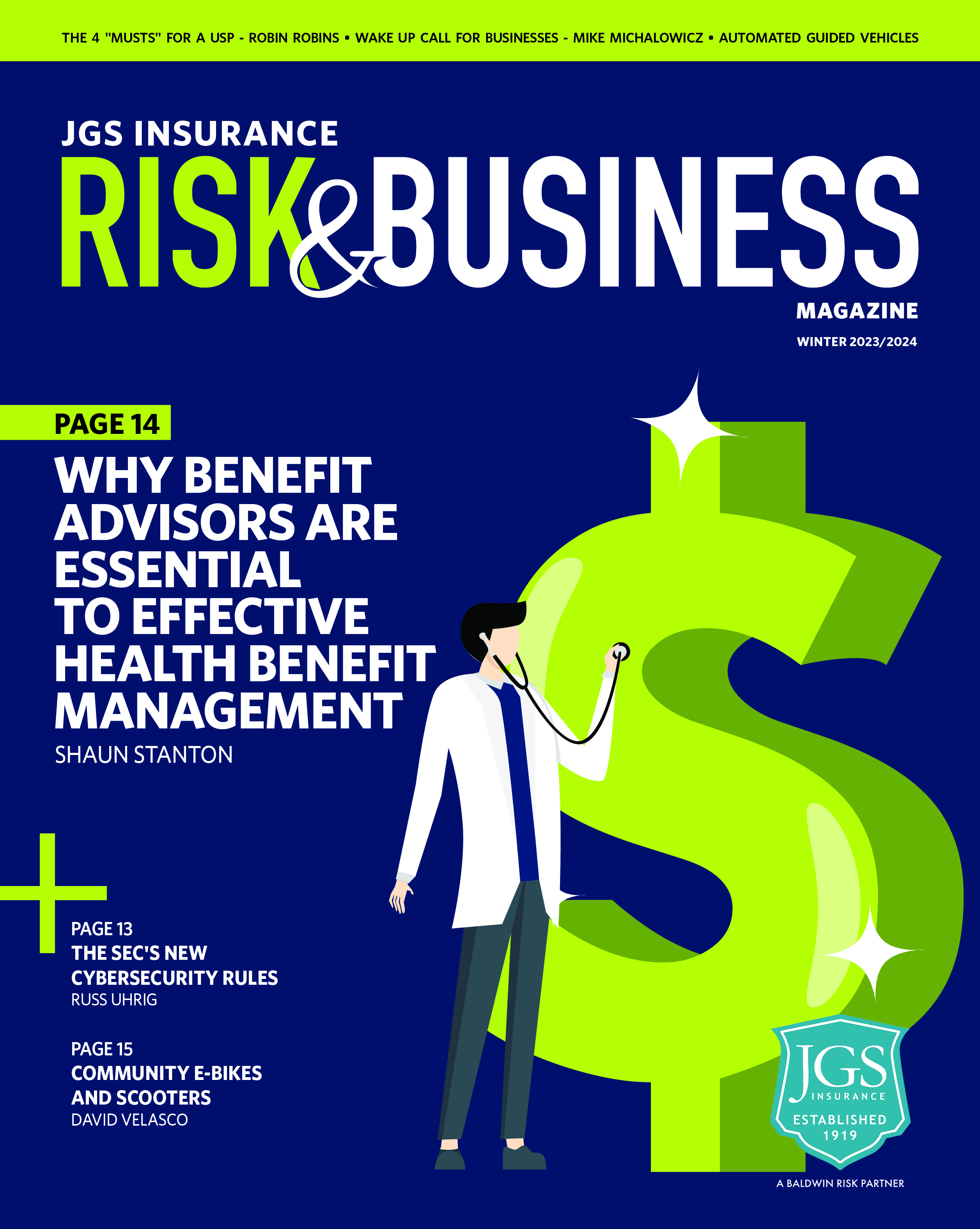By Ryan Hager, Assistant Vice President – Commercial Lines
The Rates are Not the Rates
How many times have you heard someone say “workers’ compensation rates are the rates” and you can’t change the pricing? Well, fortunately that is not accurate and there are a variety of ways for you to lower your workers’ compensation premiums.
Let’s first talk about how the insurance companies develop their pricing models that determine how much money you have to pull out of your checking account. The first step is to take your estimated annual payroll and break it down by class code. After this is accomplished, you take the set rates published by the state and multiply it by your payroll (divided by 100) for that class. The set rates are based per $100 of payroll. The next step in calculating your manual premium is taking this number:
[(Payroll/100) x Rate] and multiplying it by your experience modification, also known as your experience mod.
A company’s experience mod calculation is a very complex formula that incorporates a number of different factors. The primary factors are taking the losses from the three prior years (excluding the most recent year) and the corresponding premiums developed. Like most insurance polices, this is your basic loss ratio. The calculation will then take into account the payroll dollars for your company and benchmark them against the industry standards for that class code, the actual losses versus expected losses, frequency versus severity, and a few additional factors. Each one bears a certain weight on the overall calculation of the final experience mod.
An experience mod of 1.0 is considered industry average. Anything above or below a mod of 1.0 is a debit/credit that directly affects your premium amount. Let’s suppose that you are an ice manufacturer with $1,000,000 in payroll in the class code of 2150 (manufacturing of ice) and have an experience mod of 1.2. In 2017, the published rate in New Jersey for class code 2150 is $10.19 per $100 of payroll. When you divide your payroll by 100 and multiply the result by the published rate and multiply again by the experience mod, you will discover that your “manual rate” comes out to ($1,000,000/100) x $10.19 (rate) x 1.2 (experience mod) = $122,280. The manual rate excludes any forms of debit/credits and any taxes on the policy.
If your company were proactively managing its workers’ compensation claims and had an experience mod of 1.0, you would only be paying $101,900 in manual premiums [(1,000,000/100) x 10.19 x 1.0]. If your management of these factors and your claims experience is less than the industry average, you can earn a credit modification of up to 40 percent which will reduce your manual rates. A credit modification (a factor less than 1.0) means that your company would be paying up to 40% less than a similar competitor with a higher modification, allowing you to price your products more competitively and gain an advantage over similar companies.
In addition to proactively managing your losses through various techniques such as return-to-work programs and formalized safety programs, you can achieve lower premiums by having your account properly marketed to various insurance carriers. In the great state of New Jersey, carriers are able to take the manual premium and add (debits) or subtract (credits) up to 25% on top of your manual rates.
Some workers’ compensation insurers are very hesitant to offer credits to a policy, even when they are warranted. When marketing your account, not only does JGS Insurance have the possibility of finding a company willing to offer you a more competitive price but also one that may be willing to offer you a dividend. With a dividend on your workers’ compensation program, you have the opportunity to earn back a portion of your premium based on your actual losses. The few carriers in the state who offer this solution will provide you with a dividend table, and depending on your loss ratio (total incurred losses/total premium), the table will show what percentage of your total premium you can earn back.
So while “The rates may be the rates,” not all insurance companies workers’ compensation programs are the same. It is essential that you become proactive in the management of your workers’ compensation exposures, claims, and risk management so that you can best position your insurance program to be offered the most competitive rates, credits, and possibly dividends available in the marketplace.
Back to Blog

